How To Create Rlsa Campaign
Remarketing Lists for Search Ads (RLSA): The Tactical Guide
RLSA (Remarketing Lists for Search Ads) are unique. Unlike most remarketing tactics that rely on display ads, RLSAs work on Google's search network.
This means users have to perform a search before they see RLSA ads. So you could say they're a quasi-remarketing technique. Either way, they're effective and easy to use.
In this article, we'll explain all the basics and teach you 13 advanced RLSA methods. So get ready to turn your Google Ads performance up about 1000 million notches.
Alright, let's dig in (or skip straight to the RLSA tactics).
What are RLSAs?
Remarketing Lists For Search Ads (RLSA) is an advanced targeting feature inside the Google ads platform. It uses audience signals –data that Google uses to identify user intent for an audience–to help target and deliver specific remarketing ads without the flaws of traditional remarketing.
Remarketing Explained
Remarketing is the process used to target visitors who have already been to your site with new ads.
Perhaps they didn't buy when they visited, and you want to bring them back to try and make a sale. And so you run ads with reminders and motivational elements to get them to click back to your site.
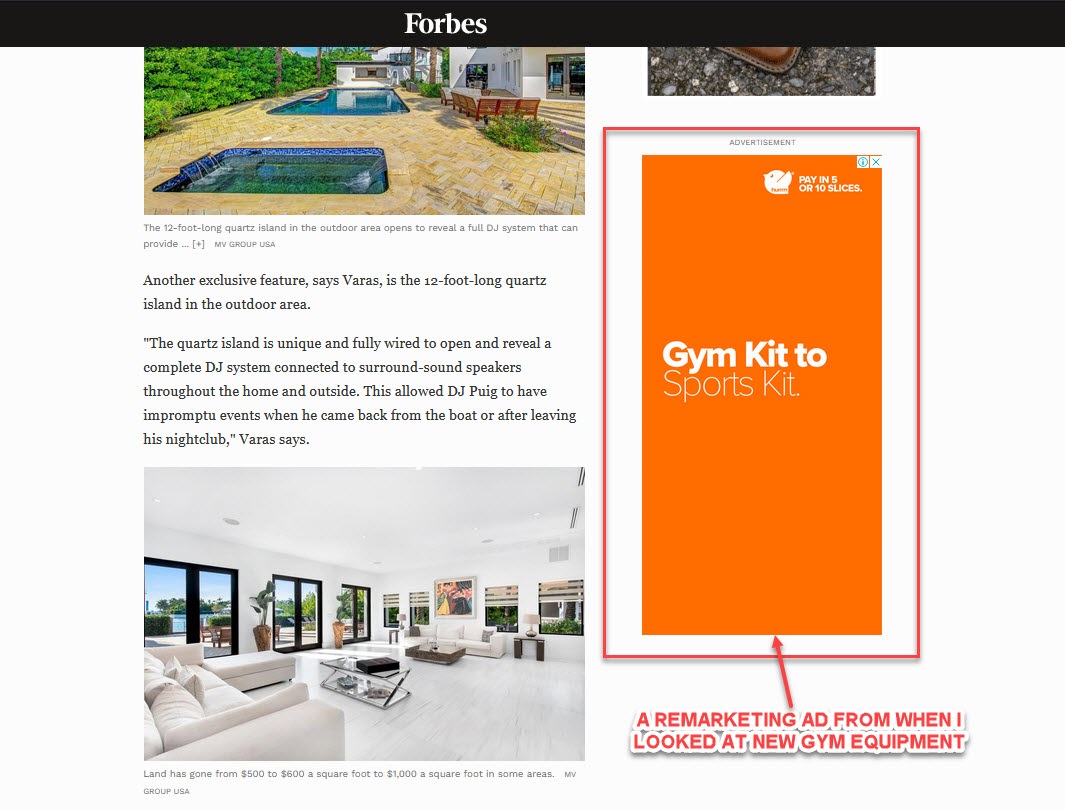
The rationale behind remarketing is that returning website visitors are often more valuable to your company. This is because the likelihood a user converts on your site increases the more times they visit your site.
So when new users leave your site without converting, should you give up on them? Of course not!
Say they visited your site without engaging with your offer. With remarketing, you can send them to relevant content, whether that be a blog post or sales page.
Or maybe they spent a lot of time reviewing a product page but left to compare pricing on other sites.
Either way, remarketing allows you to appear in front of your audience across the internet to try and bring them back to you.
How are RLSAs different from other remarketing campaigns?
Both Remarketing and RLSA are what we like to call 'low hanging fruit' or 'reactive marketing' methods.
They both target warm traffic, and both have the goal to bring users back to your site to convert.
However, there are some slight differences between the two.
Traditional (Display) Remarketing
So, can you remarket on Google's Search Network? Not exactly. Traditional remarketing is only available on the Google Display Network.
Google Display makes up banner ads on partner websites, apps, Gmail, and Youtube videos.
For example, this display ad on the Youtube Homepage:
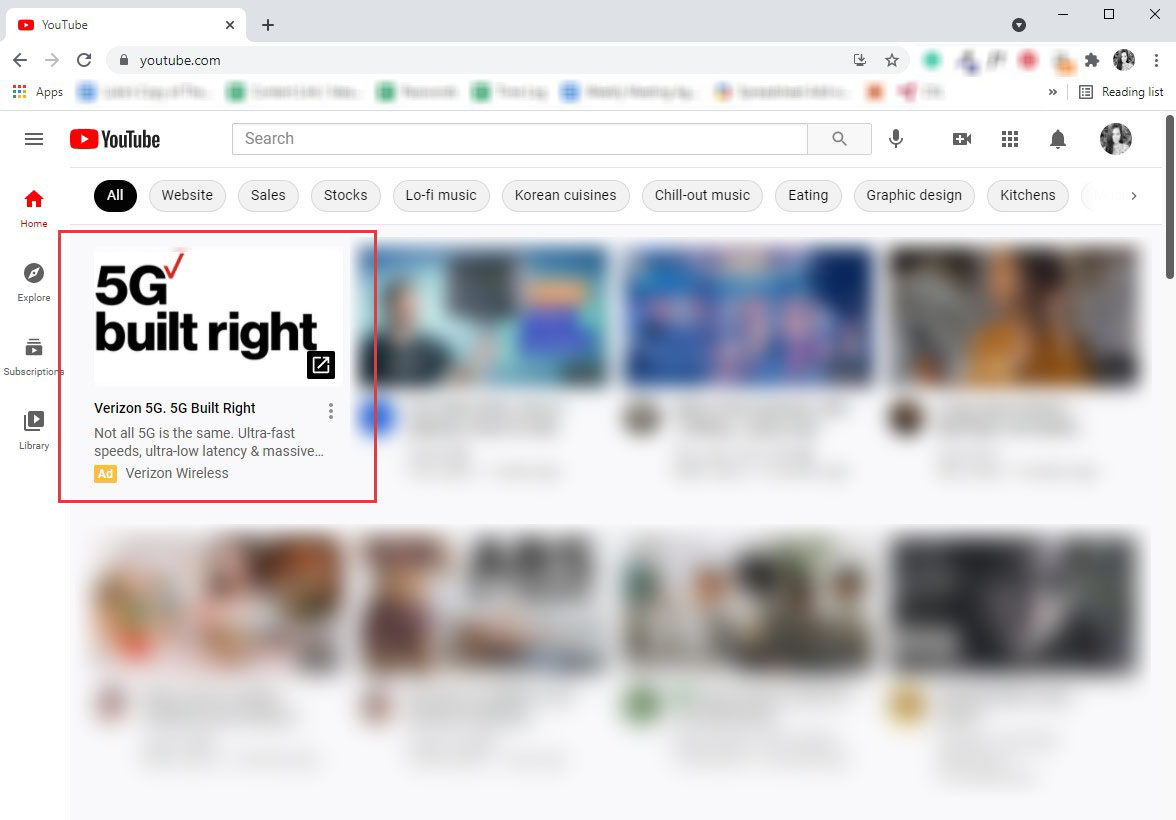
Or this banner on TechCrunch:
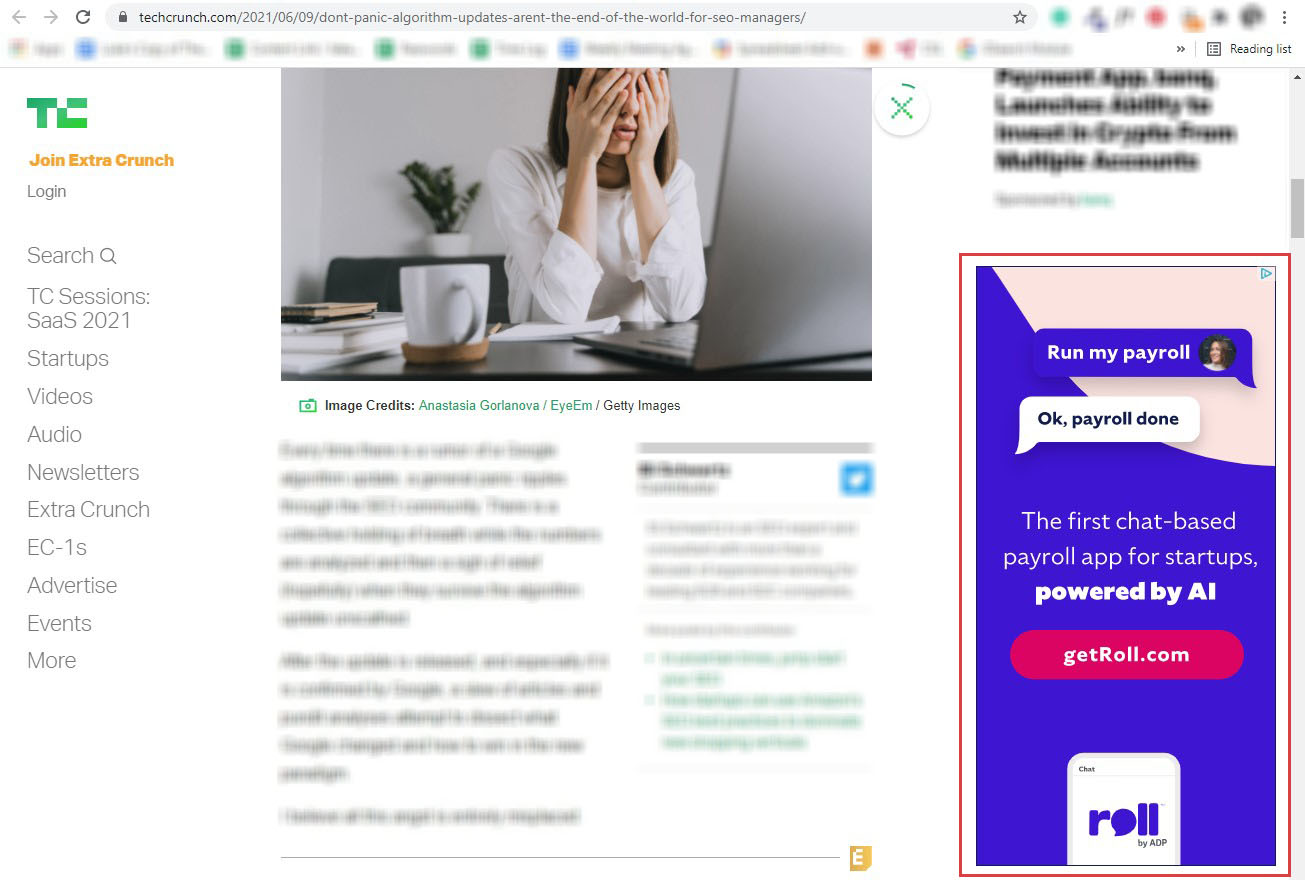
Display ads come in various sizes and can be featured in multiple placements (the location an ad will show on-page.)
Keep in mind that when remarketing on the display network, you try to get your audience's attention while browsing the web for something else.
You're saying, "Hey, stop what you're doing and check this out."
So while the reach of traditional remarketing with display can be broad, user's don't have the intent to buy or interact with you when they see a display ad.
Remarketing List for Search Ads
If remarketing can't happen on the Search Network, what about RLSA?
Technically, Remarketing Lists for Search Ads isn't remarketing in the traditional sense. It merely shares the same goal: to snag past website users and bring them back to your site for a conversion.
In contrast to the passive browsers who see your display remarketing ads, RLSAs show your ad only to those who perform a relevant search.
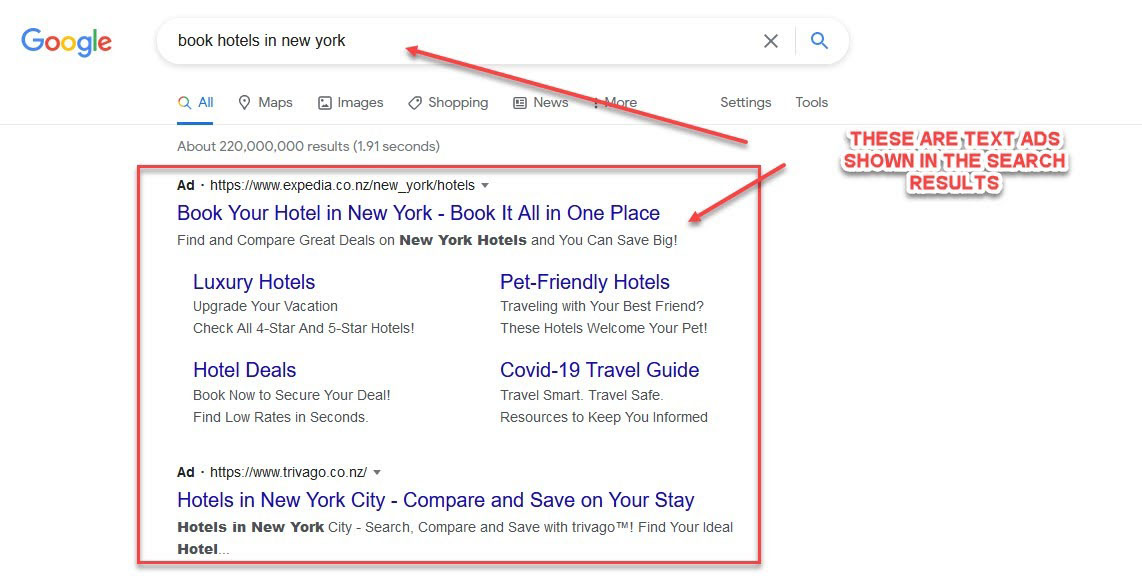
Search Ads on Google's Search Engine Results Page (SERP).
It's a powerful tool because the user has intent. In other words, they are trying to find an answer or solution to a problem you can solve. This means that they are ready to see and react to your ads.
And intent has a measurable impact on your conversion rates. For instance, across all industries, the average conversion rate for Search ads is 4.4%, compared to 0.57% on the Display Network.
In addition to meeting users at a relevant time, RLSAs allow you to set competitive bids for valuable audiences.
Essentially, RLSA is a great opportunity to use and improve Search campaigns by customizing keyword bids and ad text for past site visitors who search again for what you offer.
Ok, here's one last difference between RSLA and display remarketing ads:
Let's say I try to remarket to someone who has ad blockers on their browser. They never see my ad.
It sucks, right?
But with RSLA, Google serves ads on the SERPs. Regardless of ad blockers, ads can appear on the top of the search results page.
Next, let's cover when to use remarketing lists for search ads.
When should you use remarketing lists for search ads?
You should always set up RLSAs.
That doesn't mean you have to use them.
Observation mode will allow you to collect performance data before making bid adjustments or setting up target-only campaigns. You have nothing to lose and everything to gain.
Why not simply run a standard Search campaign for high-intent search terms?
You may ask, why run an RLSA at all? Why not just bid on keywords I think will generate valuable clicks?
One big reason is that many of those keywords, while they may have high click volume, are also highly competitive. This also means they come with a high CPC. It's a quick way to be out-bid by industry giants and burn through budget. This is especially true when you don't know if those clicks will necessarily yield a conversion.
But with RLSA's in place, I can track people who have already shown interest on my site.
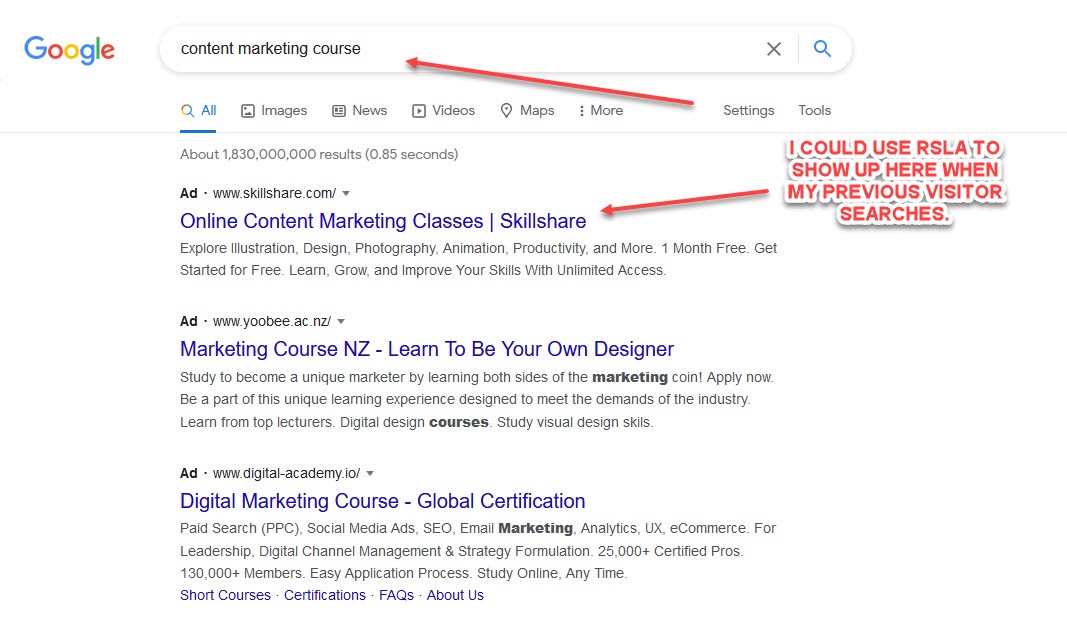
RLSAs will weed out less valuable customers by proxy, simply because they only target users who have seen your site before.
In addition, compared to a regular search campaign, you can customize text ads and adjust keyword bids relating to the page they interacted with.
This method ensures the campaign only bids on a keyword when:
- The user is a hot lead
- Searching for a relevant term
- And who has visited my site before
This can lead to more conversions and a lower CPA compared to a general search campaign.
When should I not use RLSAs?
Technically, there's no hard-and-fast rule about when you shouldn't use RLSA. However, there are a few things to keep in mind if you:
- Want to target an audience AFTER 540 days. The longest lifespan of a remarketing list for Google search ads is 540 days. Google will remove any users older than that time frame from the retargeting audience.
- Don't have high traffic volume OR are not planning to drive traffic. An RLSA must have at least 1,000 cookies or page visitors before you can use them to tailor your search ads. This helps to protect visitor privacy.
- Want to use Demographic or User data for targeting. Remarketing lists that include demographics like Age, Gender, or Interests are not eligible for RLSA.
- Are building an audience from your mobile app. It's unfortunate, but mobile-app views are not eligible for RLSA.
So, no reason to avoid RLSAs, just some qualifiers and ground rules.
How does iOS14 affect RLSA's?
As you might have heard, Apple added some new privacy settings in their latest iOS14 update.
These updates make it more difficult for advertisers to track key metrics like app installs and sales.
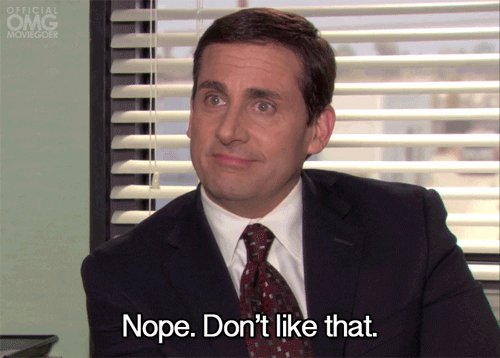
Why would Apple do such a thing? Well, to increase their users' privacy.
Now you might be freaking out about this, but here are some things to consider.
- This only affects Apple's mobile users. Other devices are all ok, but let's be honest, Apple does hold a large percentage of the market share.
- When it comes to remarketing, you will see smaller audiences as these users will not be included. You can, however, create RSLA's from email lists, so if you're capturing emails, you can work around it.
- Search ads don't run off personal data and are exempt from the iOS14 update. This means that if they search for a keyword on their phone and are a previous visitor, they will still see your search ad (#winning.)
- Click costs will vary as more users realize this and start using RLSA more.
- You won't see an iOS14 user in your reports with a standard GCLID tracker. This means that you'll want to standardize the way you use UTM codes. That said, you'll still see a conversion event. You just won't be able to trace it back to a specific individual.
So not the end of the world as we know it, especially if you're using RSLA campaigns.
How do RLSAs help your PPC campaign?
Remarketing lists for search ads can help improve campaign performance and ROI.
For example, a recent case study by Barilliance found that returning visitors are worth more and convert at higher rates.
They came back with the intent to buy and spent more with them.
Pretty impressive, right?
Some PPC marketers focus on driving new visitors to a website. But it's far more cost-effective in the long run to convert those 'warm' leads instead.
How do you set up RSLA'S?
If you're new to remarketing, you need to make sure you tag your site with a Google Ads tag. The tag is essentially a block of code. It will add website visitors to the remarketing lists you'll target ads to later.
However, if you're not already familiar with your site's code, we recommend looping in a developer or a tech-savvy colleague to assist.
To get started, open the main menu in your Google Ads account and click on Tools and Settings. Then click on Linked accounts.
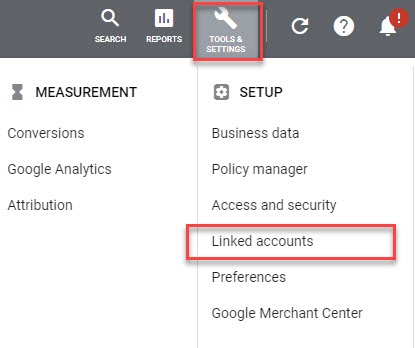
Click on Google Ads tag option and follow the instructions to load the code onto your site.
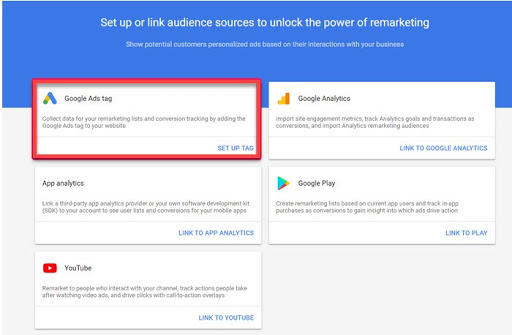
Alternatively, you can use a Google Analytics tag in place of a Google Ads tag.
You have to set up a GA tag on your website, link Google Ads and Google Analytics accounts, and enable Remarketing and Advertising Reporting Features in Google Analytics.
This option may interest you if you want to use Google Analytics reports to create remarketing audiences to share with your Google Ads account. For example, you could build audiences from users who abandoned their shopping cart and retarget them with an ad featuring a discount code. Or, if the audience you build engages with a specific product page, target them with ads customized to that product line.
Go here for more instructions on using the Google Analytics tag.
How to Create a Remarketing List in Google Ads
In Google Ads, click Audience Manager under the Shared Library section of Tools & Settings.

Select the Audience lists menu. Make sure that you are in the Remarketing section, and then click the blue + button.

This will open a drop-down menu of options—select Website Visitors.
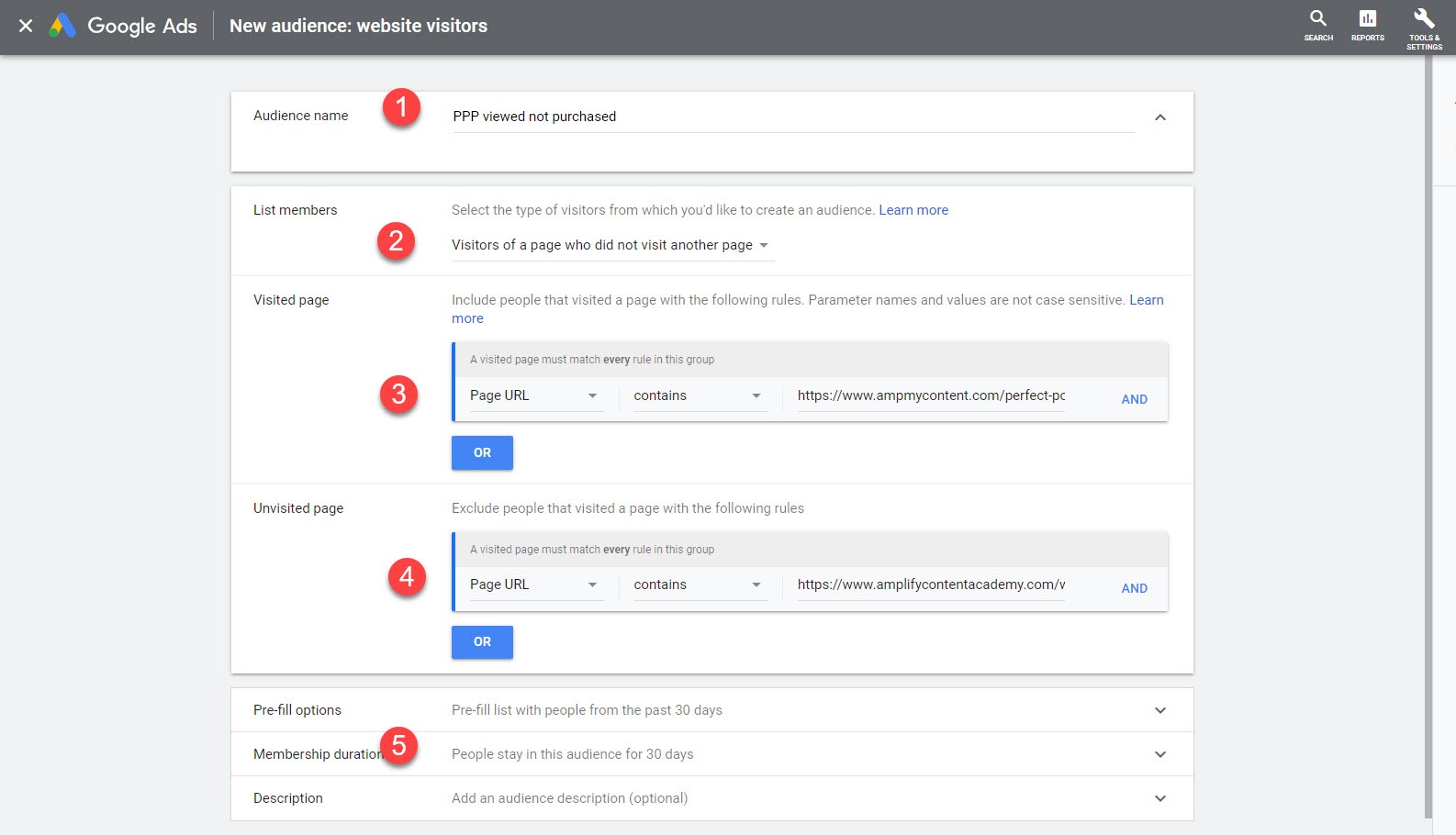
Start by naming the audience based on the goal that you will use it for.
Next, decide which members of your audience should be on this list. There are several options from the drop-down menu, including:
- Visitors of a page
- Visitors of a page who also visited another page
- Visitors of a page who did not visit another page
- Visitors of a page during specific dates
- Visitors of a page with specific tags
For now, don't get too overwhelmed by these options. We cover some specific RLSA tactics below.
For example, I wanted to run an RSLA advertising campaign for people who had seen my sales page and not purchased.
I would select the option Visitors of a page who did not visit another page.
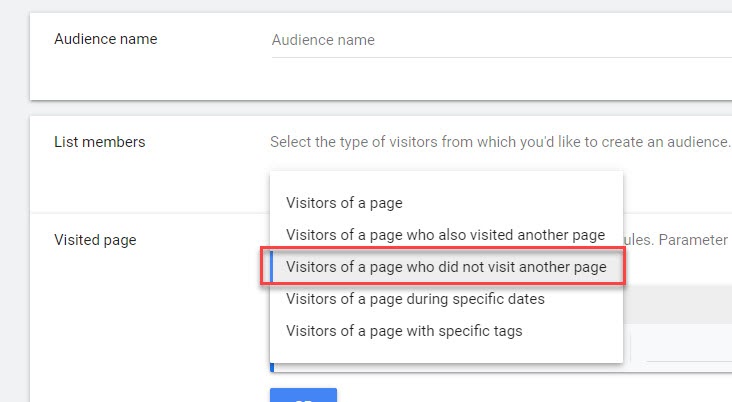
This will segment customers and non-customers, as both of these groups see the sales/landing page, but only customers would visit the thank you page.
Next, enter the URLs of those respective pages.
I added a sales page and the confirmation page that only customers see post-purchase.
Add the duration to keep people in this list and a description for your audience.
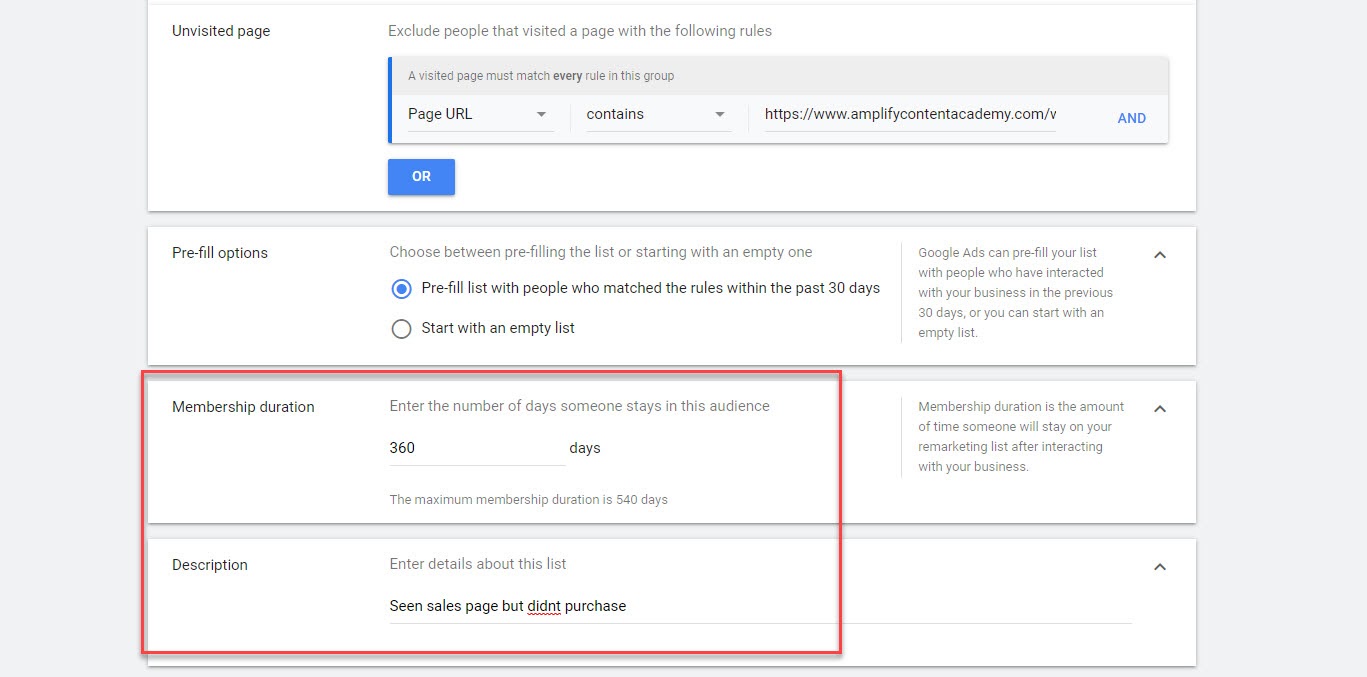
Because I know:
- RLSA lists need 1000 visitors minimum
- The offer is for a broader group of users
I went ahead and set this audience to include people for an entire year. If they buy, they are removed from the list.
A note on Membership duration
Remarketing time frames are unique to each business. Some typical time frames are 30, 60, and 90 days, but you'll want to create several time frames and observe them to determine which performs best.
We recommend creating the following audience segments:
- 1-day
- 7-day
- 14-day
- 30-day
- 60-day
- 90-day
Someone who was on your site yesterday is probably a higher-value user than someone from 3-months ago. This is because their recollection of your brand is higher the more recently users interact with you. More granular audiences will help you identify the most valuable retargeting windows and bid accordingly.
Once that's done, go ahead and save the audience.
How to Use RLSA Audiences in Ad Groups or Campaigns
Select a Search campaign or ad group you want to apply your audience to. The level you choose will depend on how specific you want your targeting to be.
Next, click on the Audiences drop-down on the left column, and add an audience list by clicking the pencil icon. That will bring you to this window:

First, under Browse, Select the 'How they have interacted with your business' option. Choose Website visitors. From here, you can choose the "All visitors" list in addition to other audience lists you've created from site visitors.
Check the box next to the audiences you'd like to add to your campaign or ad group, then click Save.
RLSA Advanced Targeting Setting
The second part of the process involves choosing your targeting settings for the RLSA campaign. There are two available options:
- Observation: This option is recommended by Google Ads. It lets you observe how past visitors behave without narrowing your campaign reach. You can adjust the bids for the audiences you select based on your observations.
- Targeting: this option narrows the reach of your campaign to just the users in your selected audiences.
And that's it!
Simple right?
Hit save, and you're ready to serve ads to your specific RLSA audience.
13 RLSA Tactics You Can Use Today
I've hinted at a few of these already, but let's break them down.
RSLA Method #1: Specific & Aggressive Bid Adjustments For Previous Visitors
One of the cool things about RLSA is that you can target keywords and adjust your bids for people who meet specific criteria.

Yes, while past site visitors are typically more valuable than users who haven't visited your site at all. But site visitors are not created equal.
A straightforward way to adjust bids based on user value is to segment your audience by time frame. For example, users who have visited your site in the last 7 days have better ad recall than someone who hasn't visited your site for 540 days. When users search and see an RLSA ad, they're much more likely to convert if they remember you.
Of course, you'd be willing to pay more for clicks that end in dollar signs: actual conversions. So set incremental bid adjustments for each RLSA segment to increase your ad impressions for the most convert-able audiences.
Previous Visitors with Multiple Sessions
In addition to the recency of a visit, the number of return visits can also impact audience value.
To clarify, users who engage more often with your site are ready for you to nudge them down the conversion funnel. Adjust bids accordingly.
If you don't have that audience lined up already, go to Google Analytics.
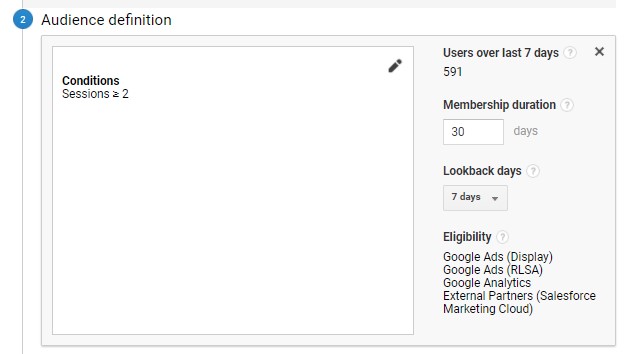
Path: Google Analytics > Admin > Properties > Audience Definitions > Audiences > + New Audience > Create New > (Advanced) Conditions
Here's how to create an audience that targets previous visitors with multiple sessions:
- Open up the Audiences menu in Google Analytics and select + New Audience and Create New. Under Advanced, choose Conditions.
- Create a condition for the number of user sessions (e.g., Users Include Sessions > 2). Hit Apply. This step indicates how many sessions a user had on your site.
- Set the membership duration between 1 and 540 days.
- Name the audience. Export to Google Ads using + Add destinations.
For this example, I defined an audience in which all included users had greater than or equal to 2 website visits in the last 30 days.
RSLA Method #2: Viewed Key Pages
Just like the number of return visits can indicate a higher-value audience, so can viewing key pages along a conversion path.
For example, a user who views the home page once is much less likely to convert than one who lands on your service page and then submits a form.
The idea here is to use RLSAs for searchers who fall off the conversion path. Then, set aggressive bid adjustments based on their potential value. The rule of thumb is to bid more for audiences who are closest to conversion.
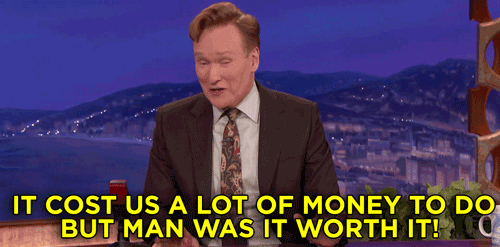
Because it *saves* money in the long run 😉
How to Build a 'Viewed Key Pages' Segment
Consider this simplified sales sequence for a SaaS company:
Visited site > Viewed Platform Page > Viewed Case Study > Completed Demo Request Form > Booked Calendar Event with Account Executive
Let's assume that you run an audit that suggests users who view a product and case study pages in the same session are more likely to submit a demo request form.
In this case, you can use RLSA to bid more aggressively on users who looked at your platform page and case study page without requesting a demo.
We'll use Sequences in the Google Analytics audience builder to create this segment.
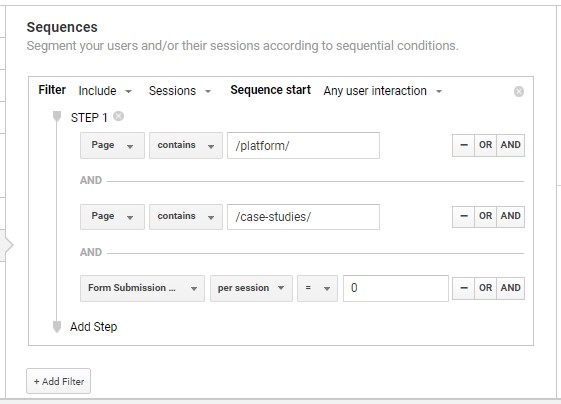
Path: Google Analytics > Admin > Properties > Audience Definitions > Audiences > + New Audience > Create New > (Advanced) Sequences
This is how the sequence above works:
- First, create a remarketing audience based on the first page visited. Select Page, and insert the URI of the corresponding page (e.g., the main platform page).
- Next, do the same for the other key page viewed in the session (e.g., a case study page).
- Finally, select a conversion goal (in this case, a demo request form submission). Set the amount to 0, which represents no conversions.
- You can then import this audience to Google Ads and layer it into an RLSA campaign or ad group.
Note: Segmented audiences like this one will reduce click volume, but the traffic you do get will be super warm and ready for your offer (like an ad with a demo request CTA).
And if the volume is an issue? You can use social ads to generate cheap top-funnel traffic to these key pages first. Then spend more per click to push the warm traffic down the funnel using RLSA.
But what if I want to target users who viewed pages in a specific order?
Sequences can help you out here too 🙂
Instead of selecting OR or AND in the sequences menu, click Add Step. Then specify whether Step 1 should be followed by… (at some point) or immediately followed by… Step 2.
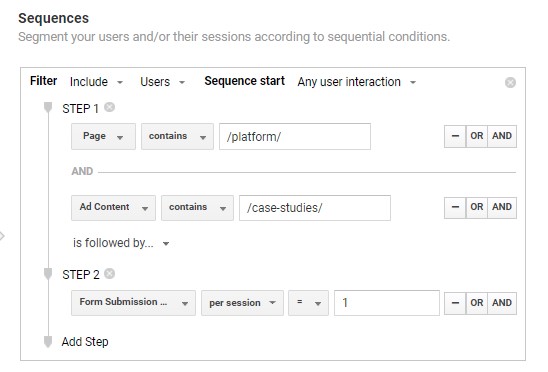
Form submission must follow the key page view.
This audience sequence would target users who submitted a demo form after seeing both key pages.
RLSA Method #3: Repeat Purchases
You can use RLSAs to remarket to past site visitors who purchase products they'll need more of.
This is especially true for seasonal services like holiday light installs or consumable items like office supplies, food, or home goods. The time to re-buy these products reoccurs periodically.
Using RLSAs, you can market your products to an audience that almost certainly needs to buy in the timeframe they see your ad.
For Example
My cat is super fussy and will only eat $70 cat food (I can't say no.)
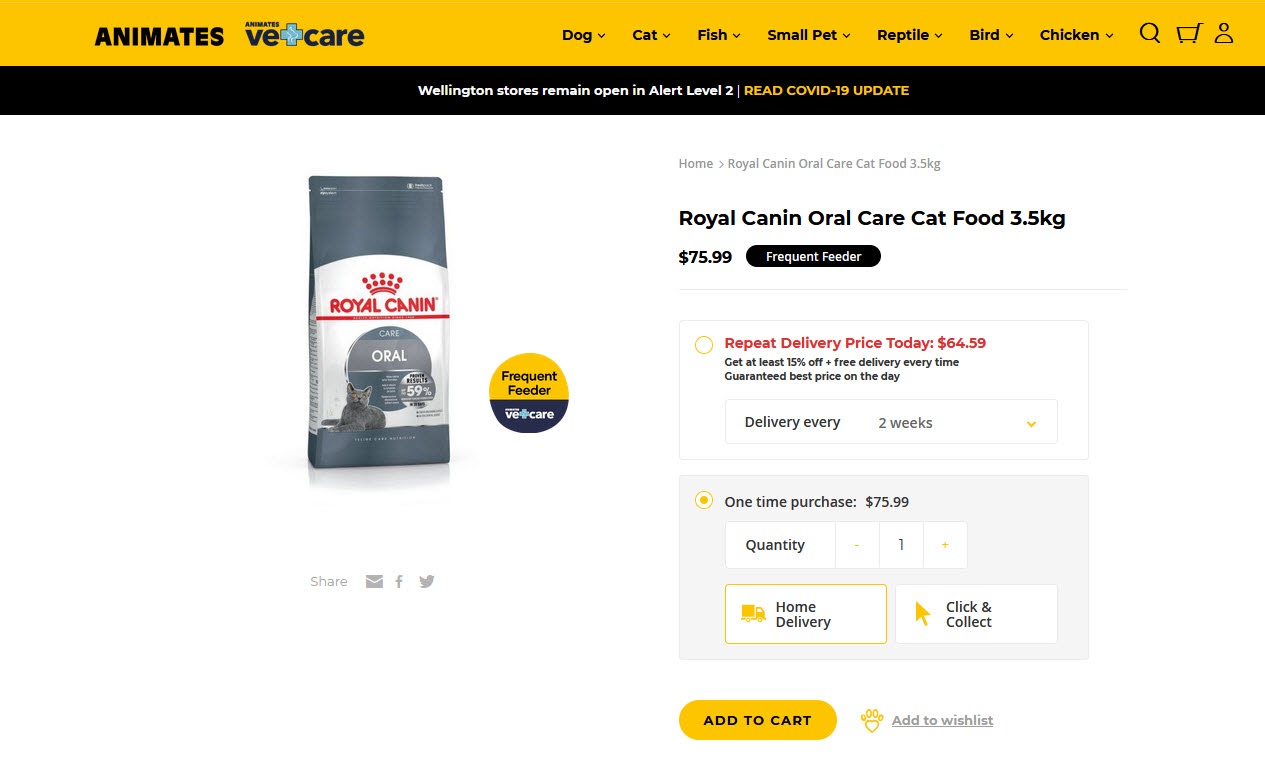
It lasts him around 90 days, and then I order more, usually from the first brand supplier that pops up on my search results.
In this example, users do have the option to subscribe to automatic deliveries. But I don't want to be buried in bags and bags of cat food, so I always buy it at the last minute.
What if, instead of just hoping that I buy again, the store ran a campaign for me instead? They could run RLSA ads to remind me to buy around the time frame that most users search for products to repurchase.
Also?
If you can build purchase consistency using RLSAs, it'll probably be easier for them to get me on that subscription delivery.
So how can you set this audience up in Google Analytics?
Retarget users whose sessions included buying a product and seeing the order confirmation page.
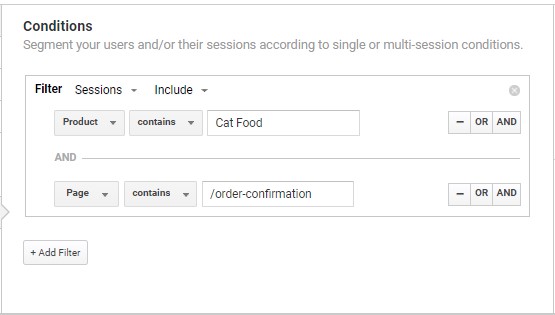
/cat-food
Click Apply.
Easy! Now users will see your ads when they go to search for cat food refills.
RLSA Method #4: Previous Customers Who May Make Additional Purchases
Again, if I'm spending $70 on cat treats, then it's clear that my cat is important to me, right?
I'm potentially a high-value customer for this company. If they sell other pet products and let me know, I might buy them.
No joke, I would get my cat this pirate costume in seconds:

Let's take a look at two ways to focus RLSA efforts on previous customers:
- Casting a wide net at users who convert
- Targeting high-value users
Users who have converted
For the first scenario, all you need to do is set a filter for transactions, revenue, or goal completions and set them to 0. This audience includes users who have completed goals or transactions.
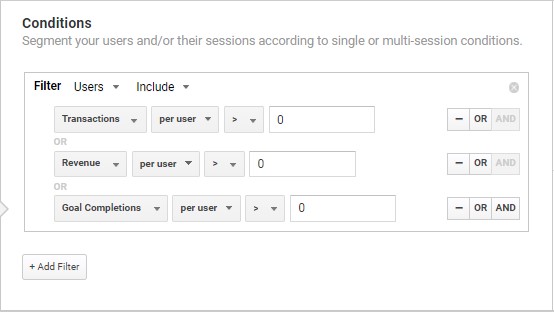
Users who have converted
While this audience is still pretty broad, users who convert once are more likely to again. Remarketing to these users with RLSA can engage customers early in their lifecycle and increase customer value over time. This approach is helpful if you have a short sales cycle or offer multiple products or services concurrently.
If you're interested in focusing on current customers already engaged with your business, check out this next option.
High-value customers
There will always be customers who make more expensive purchases or buy more often than the rest. These are a great target audience for RLSA because these users have demonstrated interest in your product or service.
RLSA ads for this audience should show users products they've looked at and haven't purchased yet, products related to past purchases, and new products or service expansions.
High-value customer audiences in Audience Builder should include the minimum revenue per user (e.g., > 2000) and product category (e.g., contains Electronics).
RLSA Method #5: Advertise Low-Margin Products
Sometimes you can have good margins, but the product's price is too low to justify running product ads. For example, a line of cat collars.
With remarketing lists for search ads, I can:
- Target high-intent keywords for specific product searches
- Customize ads and offers for these products
- Show these ads only to past site visitors when they search for closely related keywords.
I can even create an audience segment to include past site visitors who have looked at cat accessories in the past.
A standard search campaign might have too high of a CPC for me to advertise low-margin products. The fewer–but higher quality–clicks RLSA is known for works out well in this scenario.
RLSA Method #6: Cross-Sell & Up-Sell
Don't miss out on upselling and cross-selling with RLSA. Why? Because users who have bought once from your brand are more likely to purchase again. Repeat customers are your best customers.
So let's say you run a child's swimwear brand and you just finished launching a new line of kid's seamless rashguards. The 4th of July is around the corner, and you're ready to promote your latest product.
What does that audience look like?
- Includes users who have made a purchase
- Products purchased belong to specific product categories (e.g., swim, coverups, sunscreen)
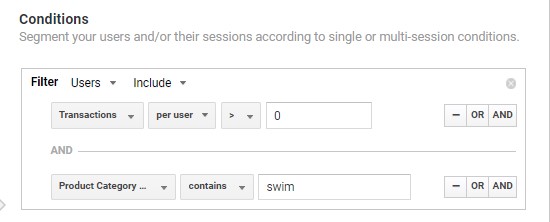
With this nicely segmented audience, I can run RLSA ads that offer two-day shipping (in time for the 4th). My ad could mention rashguard colorways that match the swimsuits my audience bought. Or, if I know they've bought sunscreen or coverups, I could customize my ad text to emphasize sun protection that lasts all weekend long.
RLSA Method #7: Exclude High Bounce Visitors
Maybe you want previous site visitors to see your search ads…but not all previous site visitors.
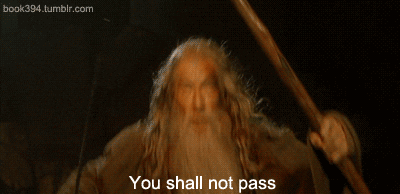
In some cases, one segment may not be as valuable to you as the rest, for example, with users who bounce almost immediately from your site.
Maybe they clicked on your ad by accident, or they're a competitor trying to burn up your ad budget with bot traffic.
Regardless, session duration and page visits can predict how likely users will convert if they revisit your website.
This is one helpful scenario you can use RLSA: set up an exclusion!
After all, it was unfortunate this user segment visited your site once; let's stop them from clicking on your paid ad again.
To do this, you need to create an audience in Google Analytics and import it to Google Ads.
Click the Admin button (the gear icon on the leftmost panel). Under the Property column, select Audience Definitions.

In Audiences, choose Import Segment and Bounced Sessions.
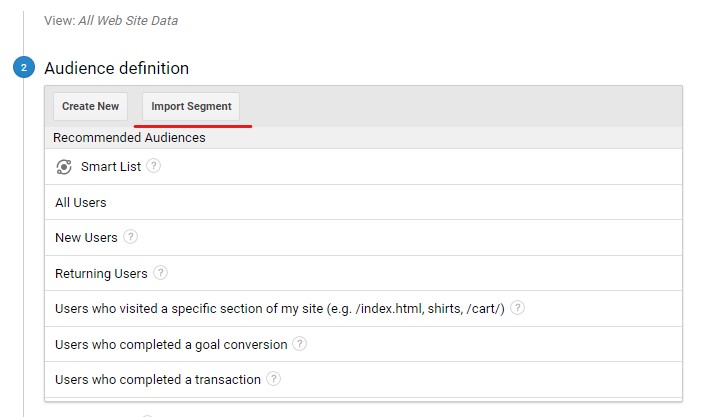
Click the pencil icon to adjust conditions for bounces.

Tip: You can add this new "Exclude Bounces" audience into any other audience segment.
Filter the options to Exclude users whose Bounces per session is greater than a certain number. Click Apply.
Finally, you'll need to share this audience with Google Ads to use in Google Ads RLSA.
In Audience destinations, review the + Add destinations menu and select 'Google search and display advertising.'
Hit OK, then Publish.
RSLA Method #8: Exclude Existing Customers
Speaking of exclusions…
There are some scenarios where you'll want to exclude existing customers.
For example, perhaps you're running a campaign to promote a subscription or single product.
Showing your RLSAs to people who have already fulfilled your end goal is unprofitable.
Plus, say you're running concurrent campaigns to the same audience. Showing customers irrelevant ads will cause ad fatigue — aka, they get annoyed and disengage with your brand.
Luckily, this exclusion is pretty simple to set up.
If you haven't already, you'll need to create a remarketing list that includes current customers. Navigate to Audience manager, and under Remarketing, create a list for website visitors.

List members should be 'Visitors of a page who also visited another page.'
Insert the landing page URL(s) users use to sign up or buy. Then include the URL for the thank you/confirmation page in the 'Also visited page' section.
Name your audience along the lines of "Existing Audience – [insert membership duration]." Then Create Audience.
The last part is super fast.
Just click Audiences and Exclusions from the left panel of Google Ads. Select the Search campaign or ad group you want to exclude current customers from, and check the box next to the audience you created.
The path above looks like: Audiences > Exclusions > Browse > How they have interacted with your business (Remarketing and similar audiences) > Current Customers List.
Hit Save, and you're done.
RLSA Method #9: Target Previous Visitors With Broad Keywords
The RLSA method I'll introduce next allows you to rake in valuable audience nuggets you may miss in standard search campaigns while passing on the junk traffic wasting your ad spend.
How? Bid on broad match keywords in an RLSA campaign on observation mode.
Let's break that down.
Usually, bidding on broad match keywords equates to dumping your budget down the drain and calling it a day.
Because broad match keywords have high reach but low targeting, they trigger ads for a large variety of search terms, with a very loose match between the keyword and search terms.
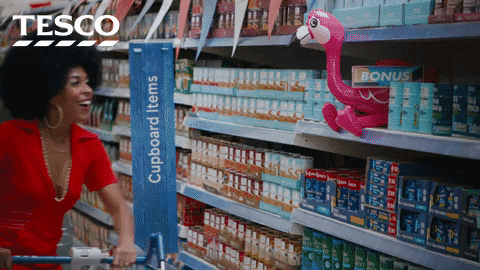
"This is relevant!" said no one but my broad match keyword.
In other words, broad match traffic represents a diverse grab bag of searches that may be irrelevant to what you're advertising.
As a result, the low ad relevance and CTR of the average broad match campaign drive up your CPC and CPA.
Usually, we would filter out bad traffic by using targeted keyword match types ( read more about those here ). They increase the closeness between keywords and the search terms that trigger ads. By extension, they help you control which users see your ads and click on them.
But here's the downside: to protect traffic quality, highly targeted match types sacrifice some relevant, high-value traffic that's included with the grab bag of broad match search terms.
So the benefit of this RLSA tactic is that it gives you a way to use the reach of broad match keywords to generate good traffic, without sacrificing ad relevance.

Like panning for gold
How this method works:
RLSA acts as a quality filter. It limits irrelevant ad impressions because it only shows ads to previous site visitors who search for your broad match term. RLSA protects your ad spend because the audience that clicks on your ad is of higher quality.
And don't forget observation mode.
Observation mode is an RLSA targeting setting that allows you to add one or more audiences to a search campaign or ad group and monitor performance. It lets you observe how your audiences interact with your broad match keyword.
This means that when you see new search terms and audiences that perform well together (i.e., a low CPA), you can pull them into a new Target-only campaign. Text ads will only be shown to users in that RLSA audience who also search for that juicy new keyword.
Disclaimer: this remarketing list for search ads technique is only for campaigns that have reached a performance plateau. Method #10 will help you squeeze the last bit of quality traffic and conversions from your audience within a fixed budget.
RLSA Method #10:Target Previous Visitors For High-Cost Keywords
Similar to method #10, you can use RLSA to target previous visitors with high-cost keywords.
You probably have a few specific, high intent, high-cost keyword searches in your industry, right? But unless you've got a near-limitless budget, you can't justify bidding aggressively on these keywords.
One, your budget would probably dry up before you could maximize your traffic volume. And two, your CPA would likely be astronomical since most of those clicks may not yield conversions at all.
RLSA circumvents this issue by limiting traffic quality issues. They restrict high-cost keyword bids to audiences most likely to convert.
It's like when you pay for an expensive pair of snow boots. You justify the cost as long as you believe they'll last a long time and deliver value (like warm, dry feet in winter).
Target high-value visitors for those expensive keywords and pay only when these users search for related terms. You'll get a lift in search volume, but you'll only pay for the clicks from high-quality users (courtesy of RLSA.)
In other words, while the average CPC on these keywords remains high, you can still make money by reducing the CPA for that ad group or campaign.
RLSA Method #11: Target Previous Visitors Searching For Your Competitors
A common reason users might visit your product or service page and leave is that they still want to explore their options. RLSAs can be one solution to address an audience that likes shopping around.
Maybe they search for a specific competitor brand they know or are looking to compare pricing?
In this case, increase keyword bids to target competitor or product terms. This way, you can appear in the results and remind these users that you may be the better option. If you think pricing is the issue, you can feature a discount to this specific audience.
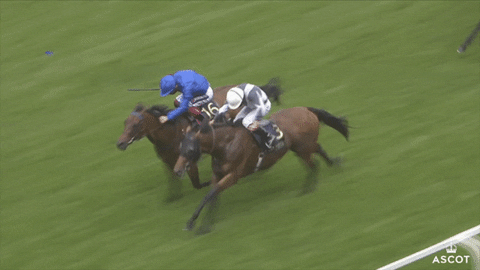
Just another way to inch out your competitor
But why does this work? Bidding on competitor terms in regular search campaigns can come with a super high CPA, and doesn't exclude users who are already biased towards another brand. RLSAs narrow this audience to people familiar with your product or service, who may still be willing to consider you.
RLSA Method #12: Target Only Campaigns with Personalized Ad Text
Obviously, RLSAs include past website visitors, but we know you can segment this audience even further using Audience data in Google Analytics.
But if we're going to take the time to segment our audience, we should ensure there is message match. Basically, consistency between audience intent, the ad text, and the landing page style and message.
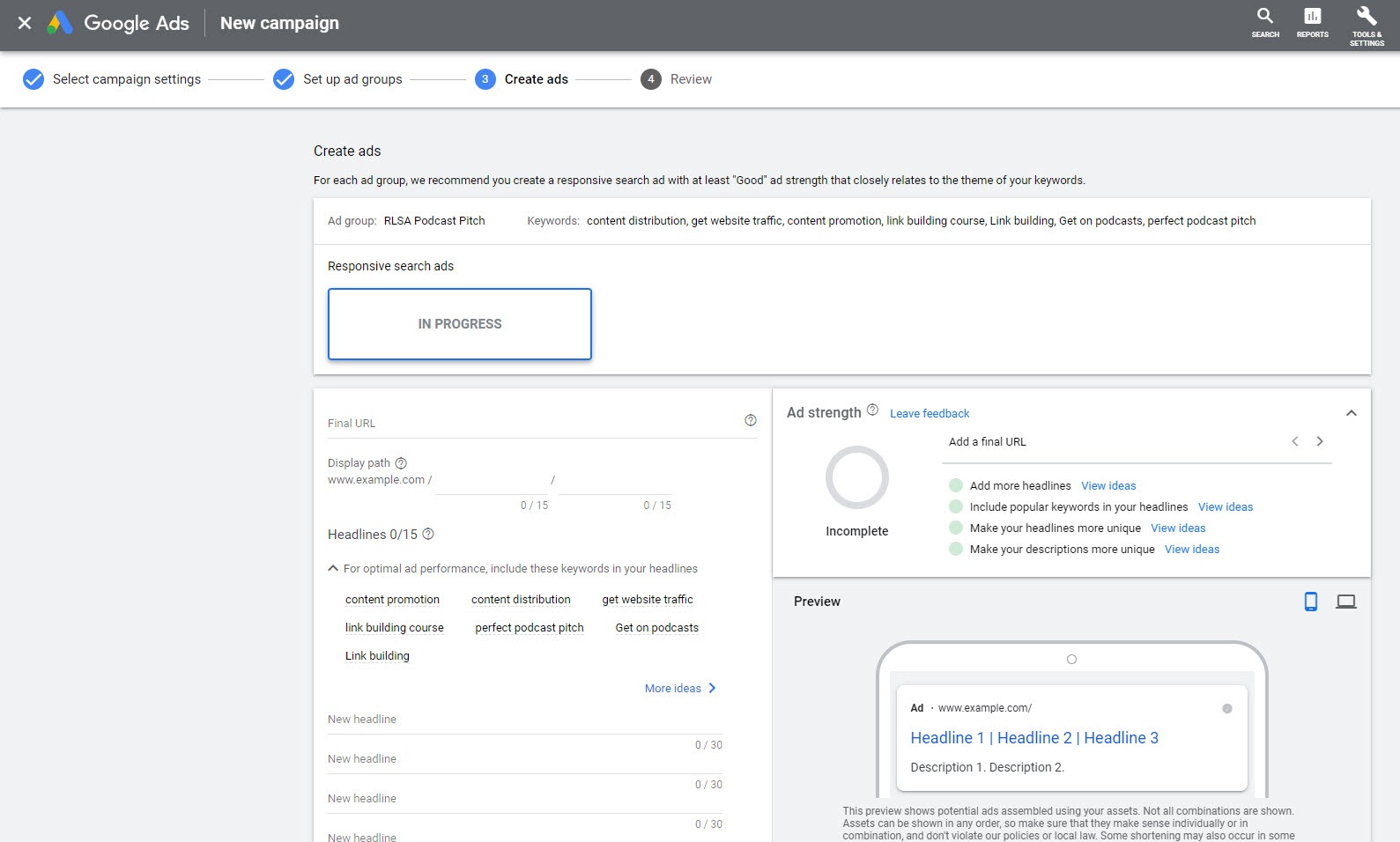
When writing ads for target-only campaigns, you should personalize the ad copy. Try and get into their heads.
- Why did they leave?
- What is their intent now?
- How does your destination or offer meet that?
- Would a promotion or discount extension help?
Let's say you're selling a product that resonates with a young male audience. If you have enough site traffic, you could create a target-only campaign that includes males between the ages of 18-25 who have visited more than 3 pages on your site but haven't purchased yet.
That's a young, engaged audience. Personalize your ad using masculine language, use an offer that fits their conversion stage, and use images or colors that align with this demographic on the landing page.
We've covered how to write ads many times before, so check out this guide for some inspiration.
RLSA Method #13: Re-Engage Current Customers
A sale isn't always the end of the customer journey. Whether you're trying to keep churn to a minimum or prepping an audience for your newest product launch, it's essential to re-engage your audience and maintain customer loyalty beyond 'closing' them.
One way you can do this with RLSAs is by building audiences using behavior data in Google Analytics.
For example, say I sell a digital course online. I know that the most engaged users in my course tend to convert better on my other offers, like 1:1 coaching. Let's create an RLSA to help improve course engagement.
In this specific example, I might build out an audience that includes segments like:
- Customers who bought my course
- Customers who haven't seen the course log-in page in 2 weeks
- An Exclusion for customers who also have purchased 1:1 coaching
Since I know the audience, I can also customize my ad and offers to this specific audience. Maybe I advertise a free course expansion or a mini-coaching call for users who complete the course.
Conclusion
So there you have it, your complete guide to RSLA's.
RLSAs are a great tool to make the most of your ad spend. They can help you target high intent users and bid competitively for clicks with a better chance of success.
Have questions? We have answers. Leave us a comment, and we'll get back to you.
For more retargeting tactics, keep reading here: Retargeting: The Marketer's Guide to Bring Back Conversions.

Luke Heinecke
Founder/CEO
Luke is in love with all things digital marketing. He's obsessed with PPC, landing page design, and conversion rate optimization. Luke claims he "doesn't even lift," but he looks more like a professional bodybuilder than a PPC nerd. He says all he needs is a pair of glasses to fix that. We'll let you be the judge.
Like what you read?
Wait until you see what's in your free proposal.
Leave us a comment.
Subscribe to our blog
Subscribe to our blog
Get weekly PPC & CRO advice sent straight to your inbox.
How To Create Rlsa Campaign
Source: https://lineardesign.com/blog/remarketing-lists-for-search-ads/
Posted by: sotobrong2000.blogspot.com

0 Response to "How To Create Rlsa Campaign"
Post a Comment